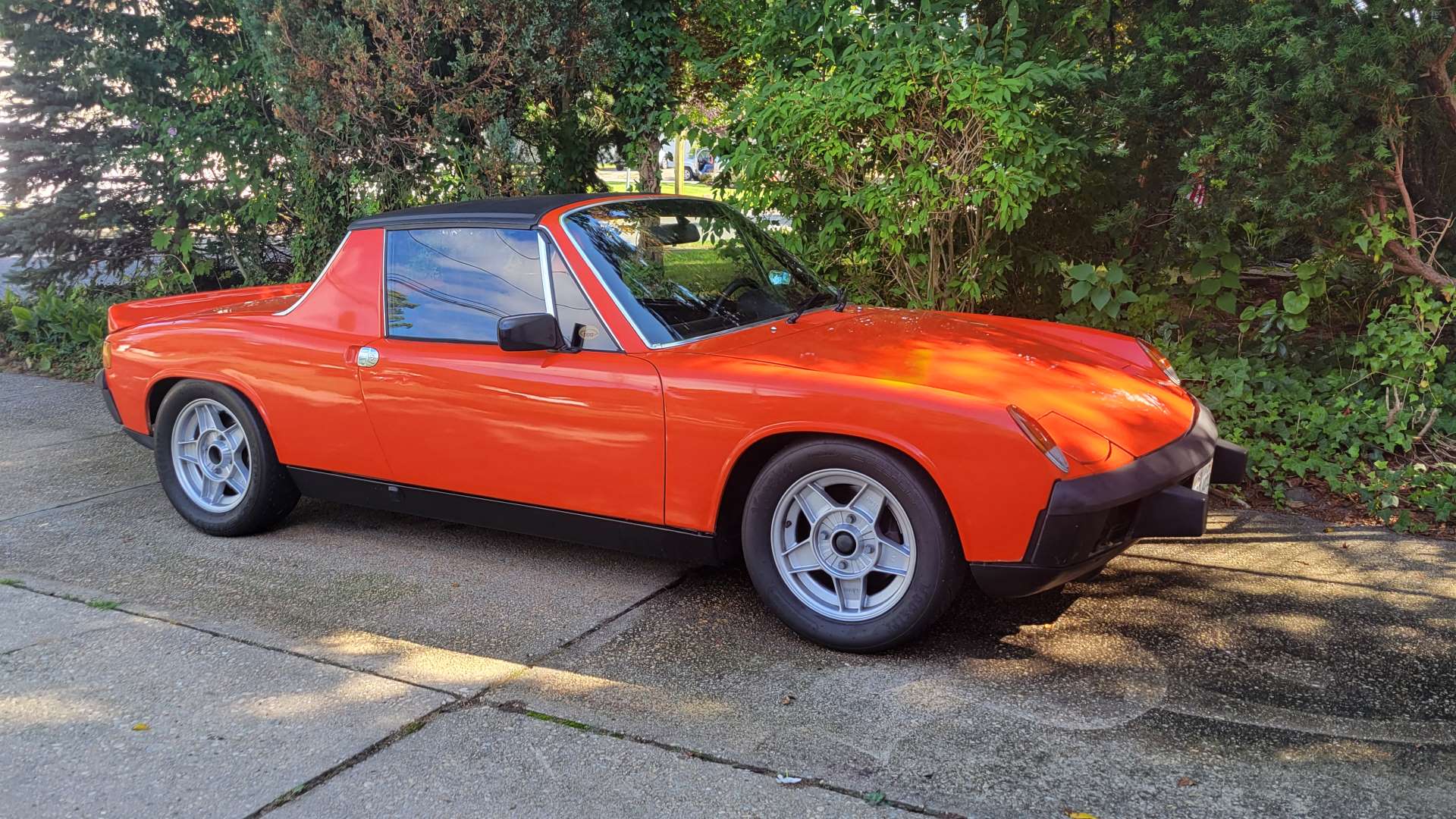- 06/14/2024
- 9 Min Read
- By: Christian Schaefer
Car Detailing 101: You Won’t Damage Your Paint By Doing It Yourself
If you’re into cars and on social media, you’re bound to see reels, videos, and TikToks focusing on car washes and detailing. Watching a dirty barn-find get sprayed down and brought back to life by a professional using thousands of dollars of equipment is super satisfying, but doesn’t that feel a little disheartening? Breaking out tools and brushes most of us have never seen before to handle jobs we tackle with wipes and paper towels doesn’t do much to help us DIYers get the motivation to do it ourselves. Luckily, doing a great job detailing your car quickly, thoroughly, or anywhere in between doesn’t require all that fancy kit.
What Does Car Detailing Include?
The automotive “detailing” label is a fairly vague blanket covering nearly anything related to cleaning the car besides a basic exterior wash. Beyond the old soap and bucket, there’s a world of specialty cleaners and equipment meant for getting into all the nooks and crannies throughout the vehicle. But don’t believe it’s all fancy; you’ll likely have some of those specialty cleaners already on hand. The easiest to come by is tire shine, or as it’s sometimes called, tire detailer.

When looking at detailing from a service standpoint, what you get depends on who’s doing the detailing. No matter who you go to, there will be a few package deals that lay out varying levels of detailing intensity. On the inside, that may mean removing the seat for a steam clean of all the upholstery and gaps within the plastic trim pieces. Externally, beyond the standard wash, a more extensive detail could include headlight lens restoration, removal of the wheels to clean the wheel wells, or a clay bar wipe down before a layer of wax or ceramic coating.
If you’re a DIYer, car detailing can include whatever you want. At the least, vacuuming and wiping down the interior are recommended, but going further for paint protection with a clay bar treatment and a protective coating will go a long way to making those future washes easier and faster.
DIY Detailing Is Just As Effective With Good Supplies
Just because you’re not a professional doesn’t mean what you do at home isn’t practical. Professionals' skills and processes are the driving factor behind their results, not the fancy tools you may see them wielding. All of that is learnable with practice and through online tutorials. You can achieve Instagram-worthy results with time, care, and simple equipment! Not to mention, the two-bucket method, the most effective way to clean your car by hand, is still often used by professionals.
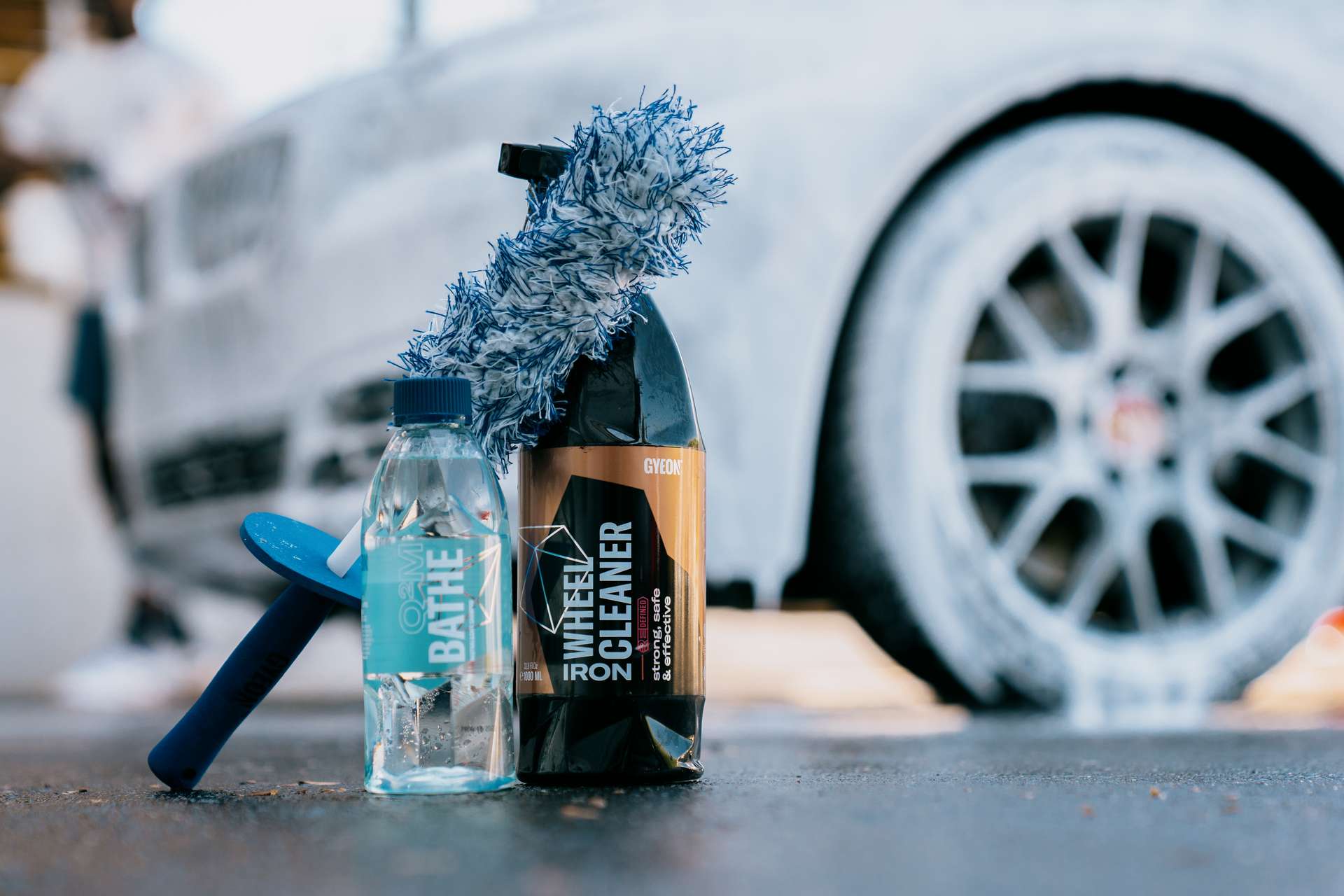
The best way to get started is to have a good assortment of towels and brushes alongside your favorite cleaners and degreasers. You don’t need to assemble that all at once, but getting the basics will go a long way toward your concours-like goals. Consider putting a list together with the items you’ll need, which may look something like this:
Beginner Auto Detailing Supplies
Leather Cleaner (if applicable)
I know that looks like a lot, and it’s not a tiny amount, but think of them like products for your body. Hand lotion isn’t the same as face lotion, and neither are soaps for each. Loofahs, nail brushes, and toothbrushes do similar things but in different areas, and if you want your car to look like new, it needs a similar treatment.
Soaps & Degreasers - All You Need
Like choosing anything else, car care products come in many slightly varying formulations and concentrations. Everyone you ask will have a different favorite; some use long-time, established suppliers, while others are quick to rally behind the new-age jump starts. Whichever way you’re leaning, FCP Euro has a brand and formula for your vehicle.
An exterior car soap should form the backbone of any DIY detailing arsenal. It’s what you’ll use the most and provides the basis for any paint protectants that follow. A soap with a neutral pH balance is least likely to affect any sensitive polished trim negatively, and the more lubricity the soap has, the smaller the chance for swirl marks. Griot’s Brilliant Finish Car Wash is the latest formulation of Griot’s established soaps. It has provided many of our employees supremely sudsy washes through foam cannons and basic buckets. However, Gyeon’s Bathe+ provides an extra layer of protection from the added SiO2. The silicon dioxide hangs around after the soap is washed off, leaving a hydrophobic layer of protection for which you’d typically need a ceramic coating.
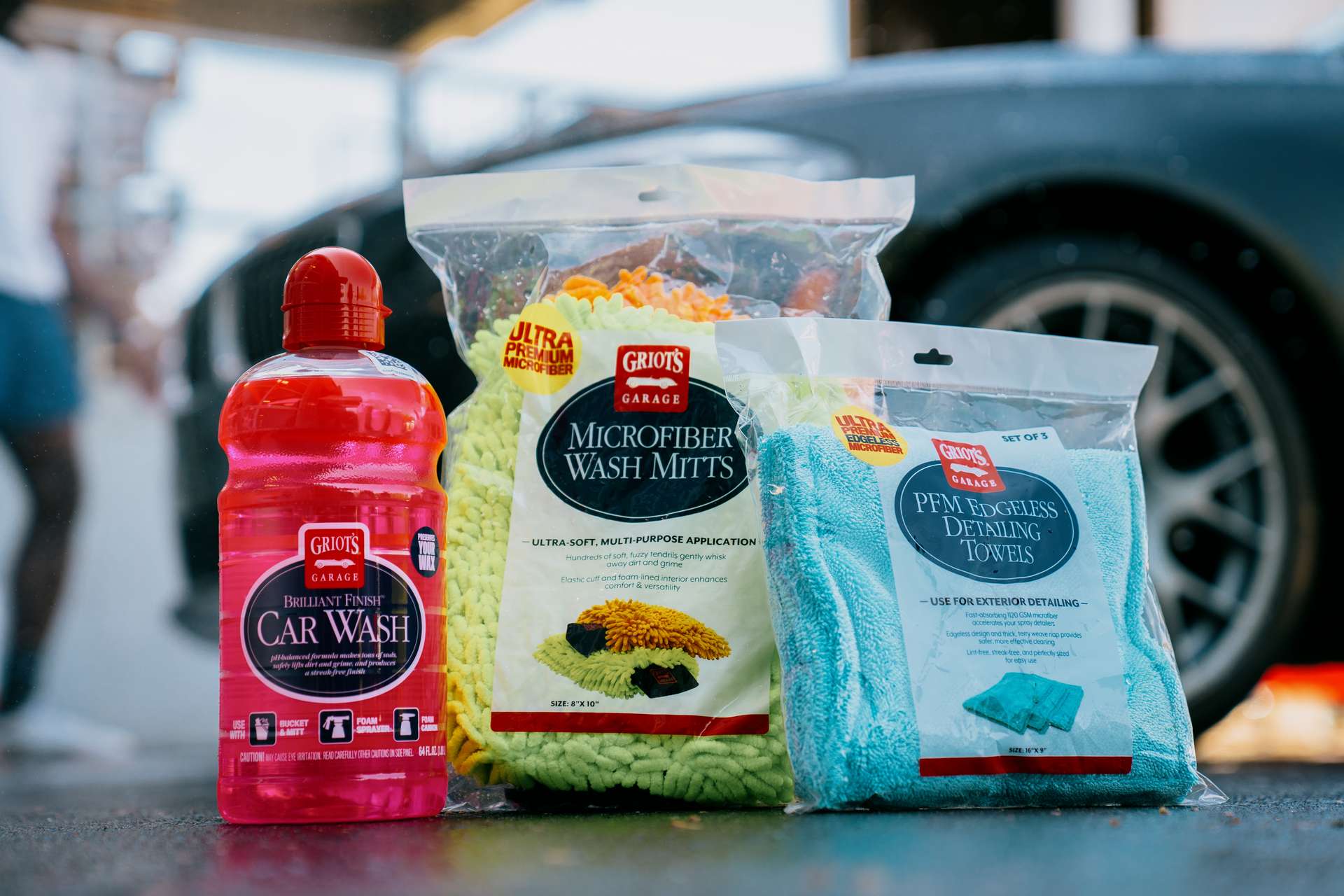
Soft-top convertible owners can use car soap to clean their tops, but that isn’t the best product for the job. Griot’s offers a specific Convertible Top Cleaner that’s tough on dirt like a soap should be but gets deep into the cloth or vinyl to break down and remove the bird droppings, tree sap, and bugs that can get in deep. Pair this with a good brush for the ultimate soft-top deep clean.
Beyond a good soap, the only other exterior necessities are a wheel cleaner and a glass cleaner.
Brake dust can look like regular dirt and grime, but it’s not. Brake pad material comes in many forms, and even the least harsh ceramic and organic pads will create the microscopic bits that cling to your wheel surface. Wheel cleaners are specifically formulated to remove those bits, and while an exterior soap may do a good job, it won't be more effective than a standard wheel cleaner like SONAX’s Wheel Cleaner Plus. If you run an aggressive brake pad, consider one with iron fallout remover, like Griot's Heavy Duty Wheel Cleaner. It’s much more aggressive at lifting out the iron specs determined to embed themselves into your wheel finish.
Glass cleaner is much less specific. Realistically, a household glass cleaner does the job just fine and should produce similar results to an automotive-focused cleaner. SONAX and Gyeon both offer their versions of a standard glass cleaner, but Griot’s is the only one that offers one that is a bit different. Their Ceramic Glass Cleaner includes silicon dioxide in the formula, which stays on the glass unnoticed but provides extra hydrophobic properties that others don’t.
Whichever glass cleaner you decide on, it’ll clean ’em right up, giving you a look at that potential disaster of an interior.
Even though it’s sealed from the elements, keeping a regularly used interior clean isn't easy. Even the cleanest fingers leave oil marks, so it’s no wonder that just a few trips to the store with the family and dog can leave the interior looking messy. Luckily, all it takes is a couple of types of cleaners, and you’ll have every surface covered.
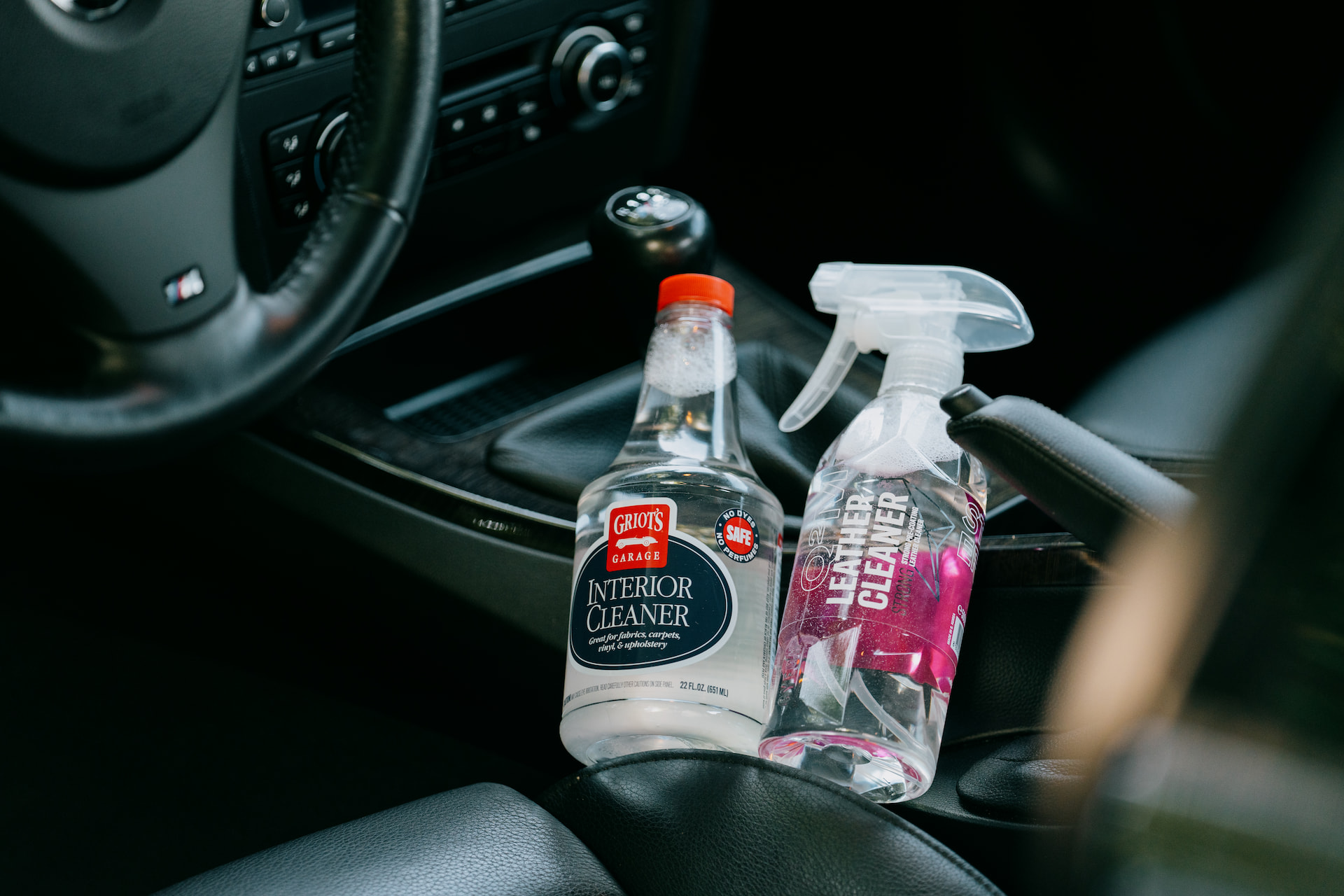
Griot’s Interior Cleaner is your best bet if you're working to keep it simple. Having used the product for many years, I can say it’s effective on every surface and quickly eliminates lighter stains. It’s best on upholstery, but plastics on dashboards and door panels aren’t an issue. However, the best results come from the more specialized formulas.
Gyeon Q²M FabricCleaner and SONAX Multi-Purpose Interior Cleaner are specially designed for fabrics and carpets. They penetrate deep and loosen the oils and dirt that love to stain, lifting them out so that a simple wipe with a towel removes them. Both can also be used as a pre-treatment for a more intense clean with a specialized vacuum. Leather has different requirements, so a dedicated leather cleaner is recommended. SONAX, Gyeon, and Griot’s Garage have their own product version, so choose who you’re most comfortable with!
Lastly, stock up with a quality interior detailer. As I said before, the all-purpose stuff works well, but it can make certain trim materials feel sticky. Interior detailing sprays won’t do that. Instead, you’ll be left with a dry, anti-static surface with a matte finish. Gyeon’s Q²M InteriorDetailer is a bit pricier than Griot’s Interior Detailer, but both products will do the trick.
Towels & Tools - All You Need
The hardware you carry has a bit less significance than the dedicated cleaning products, but the items you choose to wash and dry with will affect your paint quality. In every case, the name of the game is keeping your towels and sponges clean, even when using them, so that none of the harmful contaminants you’ve removed from the paint, seats, or wheels can damage other parts of the process.
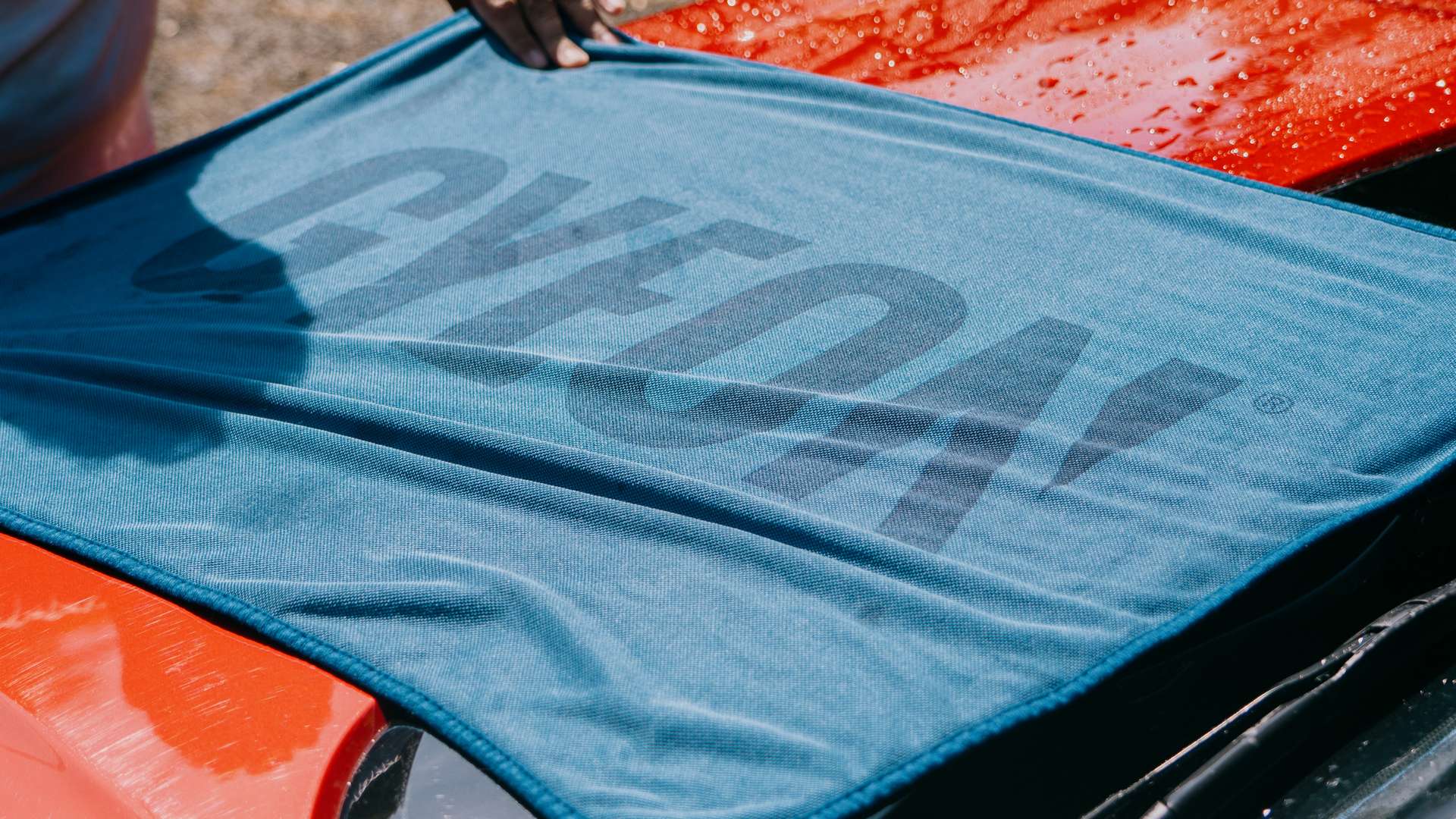
Towels will make up the majority of your detailing kit. There are large towels for the paint, edgeless towels for polishing, and dual-weaves for applying and drying. No professional would expect you to go out and acquire an arsenal of rags, but you will need more than a few if you plan on cleaning each surface as best as possible.
To dry the exterior paintwork post-wash, grab a big drying towel. Drying towels, sometimes called shammy towels, are crafted to be super absorbent while trapping contaminants that may scratch the paint. Fabric, layer count, and edge type are the main differentiators between the various available options, so read up on each to see what you prefer. Some of our more common options are the Gyeon Q²M SilkDryer and the Griot’s PFM™ Terry Weave Drying Towel. Both are an edged, dual-weave design with rough 2ft by 3ft dimensions. However, don’t sleep on the old-school leather chamois. They were the standard for a long time for good reason.
From there, stock up on your exterior agitators of choice. Wash mitts are today’s go-to because they’re easy to use and let you get into all the tight areas with your hand. This two-pack from Griot’s Garage should be a no-brainer. If you prefer a sponge, SONAX’s Microfiber Sponge has the same tendrils as the wash mitts, so it should trap dirt better than a traditional sponge. Wheels are a different story and should have their own brushes or agitators, as brake dust harms paint. Griot’s offers a two-pack, while Gyeon sells a standalone brush, but both are essentially the same kind of tool.
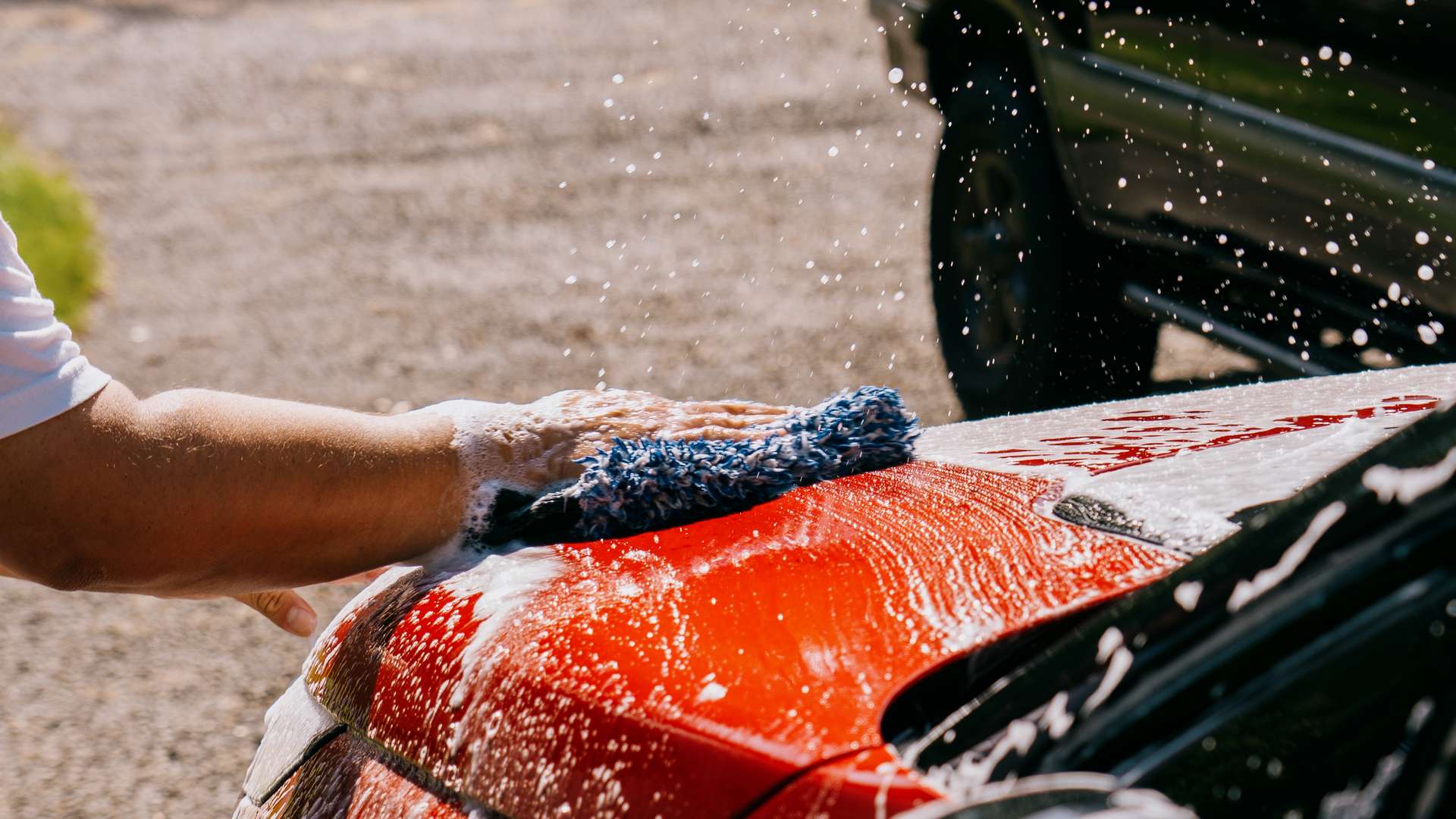
Inside the cabin, splitting up towels based on what they’re detailing is less serious. Applicator pads are great for applying various creams and conditioners to leather upholstery, though leather brushes also work well. When cleaning surfaces and polishing trim, take your pick of the wide range of detailing towels. Here are just a few of what we offer:
When You’re Ready, Take Your Detailing To The Next Level
Once you’ve established your regular washing cadence or feel ready to dive deep into vehicle detailing, there’s plenty more to explore from a products and process standpoint. The former is far easier to jump into as it only requires the money to purchase the extra tools or cleaners. However, the more advanced processes will have a more significant impact on detailing quality.
You can do a lot to assist the standard washes that keep the paint surface free from swirls and looking good, even after a while. If you’re between washes with a build-up of tar, bugs, and rubber on your hood and front bumper, look into some of the specialty “removers.” Bug & Grime and road-based cleaners are formulated to dissolve and dislodge their specified targets without damaging the paint. The latter is convenient when cleaning the car after a track event. After using one of those removers, hit the panel with a quick detailer like Speed Shine and have a panel as clean as after a wash.
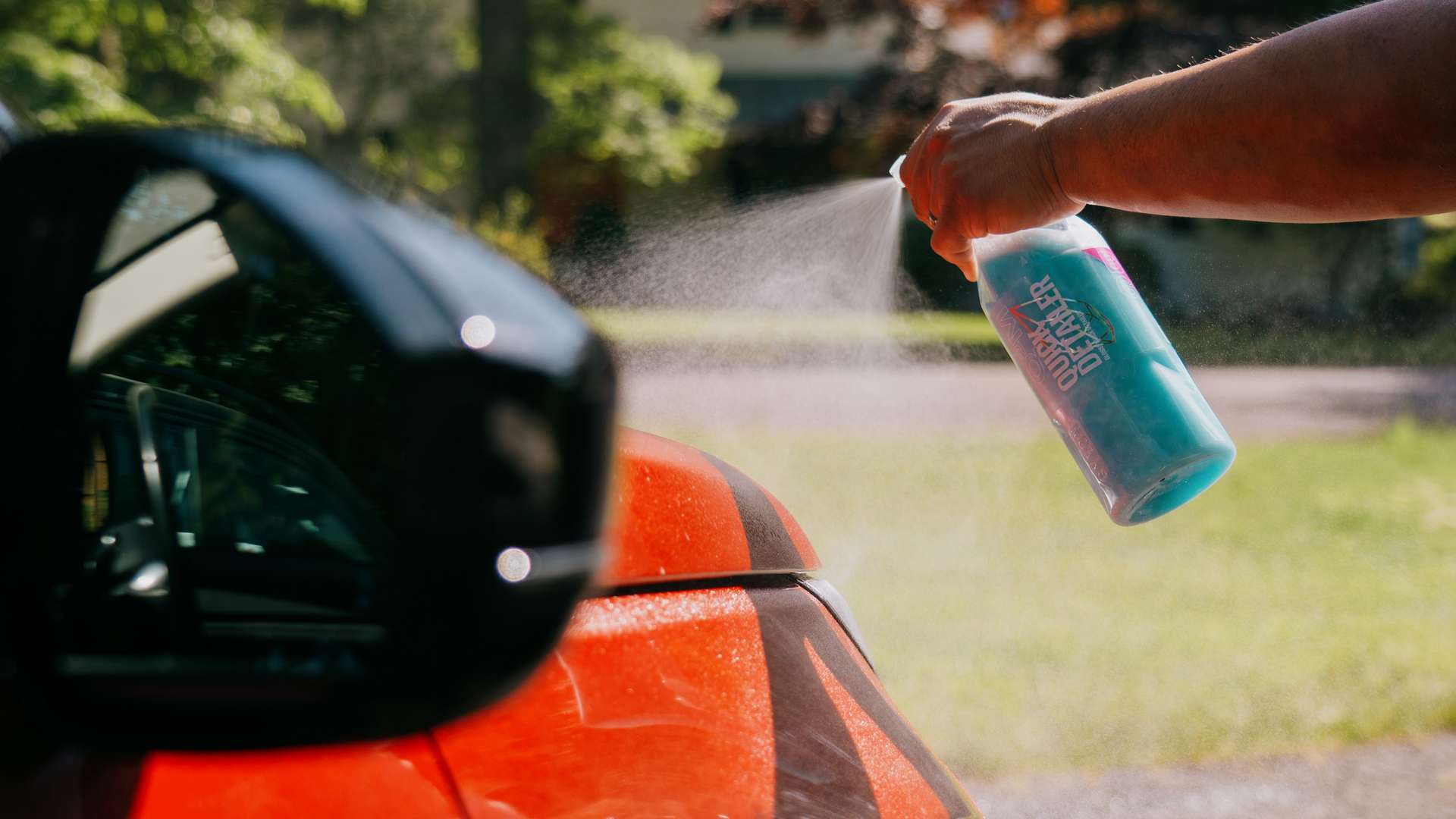
A fallout cleaner is also perfect for a post-motorsport cleanse. Those same aggressive brake dust particles will get past the wheels and onto the paint surface, where they’ll embed themselves. As it does for the wheels, the fallout remover attacks the iron particles and pulls them out to keep your clear coat tint-free. You can pair that with a pre-wash foam treatment that loosens and removes the big, nasty particles, sure to create swirls when caught in your wash mitt.
After the wash, water may bead off the paint surface, but to the touch, it won’t be very slick. In that instance, you need a clay bar detail. Simply hit the freshly cleaned paint with your quick detailer of choice and wipe the clay bar over the surface like a microfiber cloth to pick up those hidden deposits once and for all. It’s not a quick job, but the results are unlike anything else.
After using all those products, the last thing to do is protect your paint. PPF is a transparent plastic film that lasts years but can be costly. A wax or ceramic coating does a similar job while being less expensive and DIYable.
Wax vs. Ceramic Coat - What’s The Difference?
It’s pretty difficult to mess up a standard wash. As long as you use car-focused soap and a clean sponge, not much can go wrong. On the other hand, paint correction and protection are more complicated, and incorrectly performing any of their differing processes can leave you in a worse spot than where you started. However, don’t let that stop you from becoming familiar; great results aren’t uncommon with patience and practice.
Wax and ceramic coats provide a protective coating for the paint surface. When applied, they form a sacrificial layer, absorbing the shots from road debris that would normally scratch and chip the paint. However, beyond the same purpose, wax and ceramic coats provide their protection in entirely different ways. The latter is much newer and trendier, but don’t let that distract from the industry-standard protection that waxes still provide.
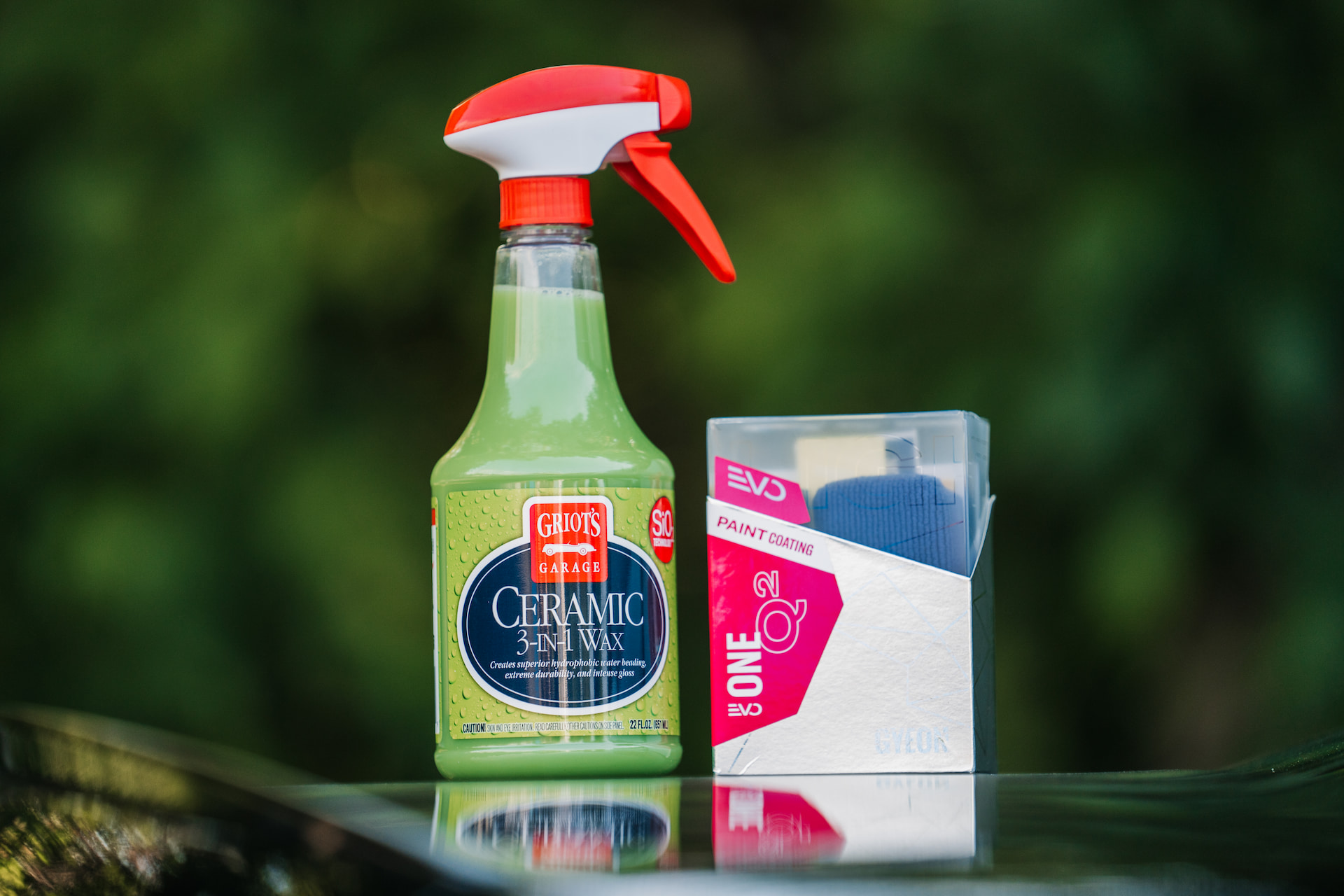
All waxes are applied as a liquid and are spread across an area before being buffed to a shine. It’s a relatively simple process in theory, but too much or too little wax will give funky results, as would not letting it set enough before buffing. If you can be patient and work in small sections, it won’t be too difficult to pick up, and you’ll be left with killer shine and depth, depending on the compound you use. Griot’s offers a few waxes, with their most classic being the Best of Show. However, their newer Ceramic 3-in-1 Wax and Gyeon’s Q² Wax offer the best of waxes with some of the hydrophobic and chemical resistance as ceramic coatings, a good compromise without going for the more expensive treatment.
Ceramic coating done by a professional will cost more than wax. The process is similar—a liquid applied to the paint to protect it—but the ceramic is a much thicker coating made from many different chemicals. While it won’t necessarily provide the same show-car shine and paint quality, the ceramic can last several years, whereas wax will last several months. It’s also incredibly hard to scratch, and it’s UV resistant, so it’ll protect the paint surface from sun damage. Gyeon has been a large supporter of ceramic coatings, offering three formulas depending on the finish you’re looking for. Each is available in a kit, but their Q² One EVO is formulated specifically for the ease of the DIYer.
Whichever you choose, a good application will have your ride shining like new and protected better than ever.

